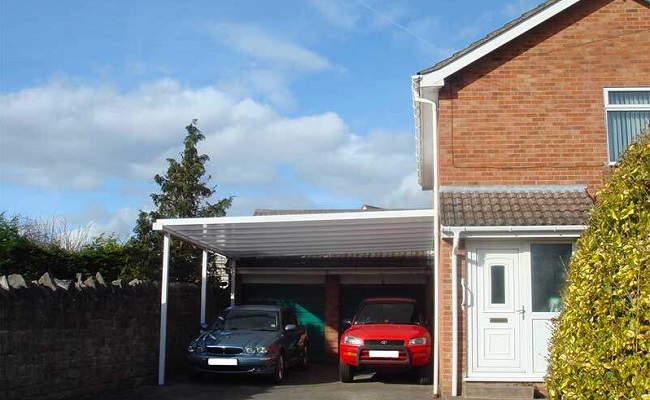It is always a good idea to check whether you need planning permission for a structure before you begin the work. There are countless stories of people being made to take down illegally built buildings, by their local planning departments. This said, in general, you don’t require planning permission for a carport as long as you abide by the rules of permitted development.
Understanding Planning Permission
Whilst we can regard planning permission as an unnecessary bureaucracy, it is in fact a sensible system. Generally, it prevents over-building, and it considers the implications of changes on neighbours, the local community, and traffic. Planning permission is designed to keep our cities and countryside looking pleasant, whilst being usable and accessible. It is not there to make your life awkward or prevent you from adding extra structures, such as carports, to your home.
Exemptions and Rules for Carport Planning Permission
Your carport won’t require planning permission if you follow the guidelines for permitted development surrounding carports. It is very important that you follow these, or else you will need planning permission for your carport. The carport will be treated as an extension to your property and will be subject to any planning regulations regarding house extensions. Your carport cannot be on the side of the house that is facing the road. It can be a maximum of 4 metres high unless it is within 2 metres of the boundary, in which case it can be 2.5 metres high. It must be less than half the total area of your property, not including your house. If you live in a listed house, in a National Park, or in an Area of Outstanding Natural Beauty, then you will be subjected to more stringent planning laws, and you will need to seek professional advice.
Requirements for Permission
If your carport doesn’t meet the above guidelines, then you will need to apply for planning permission before you build your carport. Don’t risk building it without the necessary permissions, as you could be made to take it down.
Planning Permission Application Process
Planning permission must be sought through your local planning authority. Each local authority has its own guidelines and timeframes, so you will need to look at the relevant ones for your area. Make sure that you follow their instructions exactly, as your planning permission could be rejected if you fail to follow the guidelines for submission, rather than on an actual point of planning law. Generally, as long as you follow the guidelines, permission for a carport will be granted. This can be a lengthy process, depending on the backlog of applications, so don’t book in any work before your permission is granted.
Seeking Professional Advice
Sometimes it can be wise to seek professional advice. You can speak to your solicitors, who may be experienced with planning issues, and be in a position to advise you. If your solicitor cannot help, then find a local planning consultant. A local planning consultant will know how the local planning office works and will have a greater understanding of their procedures and processes. This knowledge can be invaluable in obtaining planning permission. It can be necessary to seek professional advice if you live in a National Park or an Area of Outstanding Natural Beauty, or live in a listed property, as the planning rules for these are stricter. If you are unsure, then always seek advice.
Frequently Asked Questions
1. When is planning permission needed for a carport?
This is needed for a carport when it does not meet the guidelines for permitted development for a carport. This could be because the carport is too large, or because it is on the side of the house which is facing the road.
2. Can I build a carport without planning permission?
You can build a carport without permission if you follow the permitted development guidelines. These include guidelines such as the height of the structure, placement of the structure, and how close it is to your boundaries. If you follow these guidelines, then you should be able to build your carport without needing planning permission.
3. How big can a carport be without planning permission?
There is no definitive size that your carport can be, as it is related to the size of your plot. Your carport cannot be bigger than half the area of your property, not including the space taken up by your house. So, if you have a huge plot you will be able to build a far bigger carport on your plot, than you would on a smaller plot.
4. How high can a carport be without planning permission?
Again, this is dependent on how close your carport is to the boundary of your property. The closer to the boundary line, the lower your carport needs to be. The highest it can be is 4 metres, but if it is within 2 metres of the boundary, then it can only be 2.5 metres high.
5. How close to the property line can I build a carport?
You can build up to, but not over, your boundary line as long as you follow the permitted development guidelines regarding the eaves height of your carport.
6. Does a carport require building regulations?
If you follow permitted development, then you do not need to get building regulation approval. However, if you are building your carport with planning permission, then you will need to follow building regulations.
7. Are there any conditions related to the size of a carport and planning permission?
If your carport exceeds the size or height that is allowed under permitted development, then you will need to obtain planning permission for the structure.
8. Can carports be considered as permitted development?
Carports can be built under permitted development, as long as they follow the guidelines.
9. Are carports classified as outbuildings?
Carports are classified as outbuildings, as are garages, and will come under the same permitted developments guidelines that apply to outbuildings.

